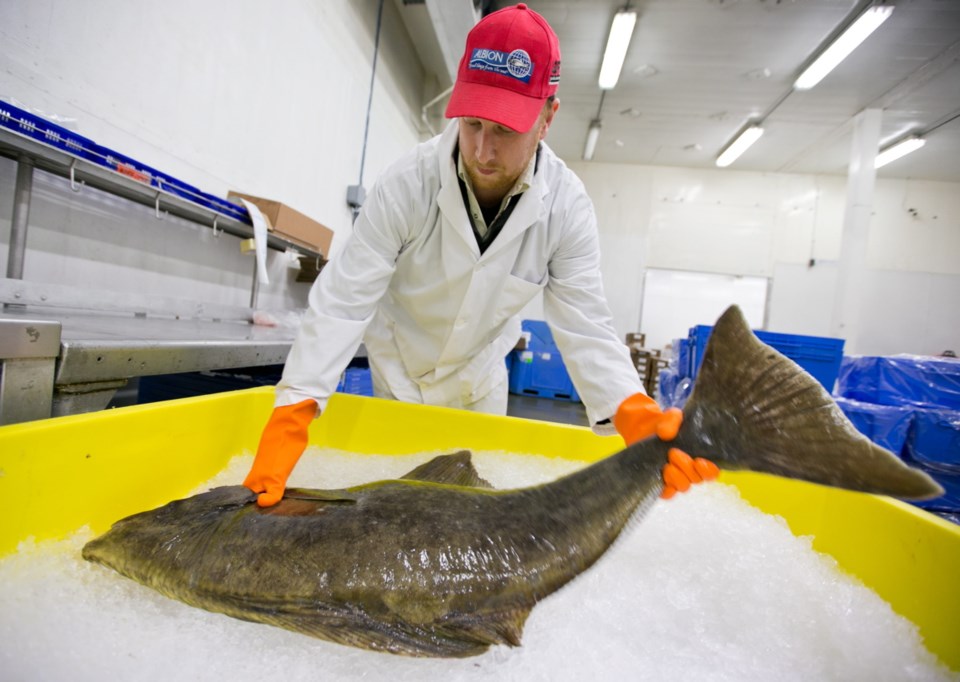This year’s halibut season is starting up just in time.
“The freezers were all cleared out. The frozen market got really short, starting in November-December,” said Cody Smith, who works in import, export and wholesales sales at Albion Fisheries in Victoria. “The cupboards were bare going into the fresh season.”
Halibut — the world’s largest flatfish — is perennially popular. It is a white fish, with a firm texture and a mild flavour. “People who don’t like fishy tasting fish will eat halibut,” Smith said.
“I think it is also a sign of spring in the Pacific Northwest because people are able to start dusting off the grills and barbecues.”
Also, the halibut fishery creates jobs in B.C. and Alaska, he said. In this province, there are 435 commercial halibut licences, including commercial communal licences issued to First Nations.
“People tend to support things that support their local communities,” Smith said.
Several Greater Victoria grocery stores are selling fresh halibut at sale prices.
The commercial halibut season opened March 8 but in the first 24 hours, most vessels under 52 feet were held back by poor weather, said Smith, but some larger boats were able to get out.
Port Hardy, on northern Vancouver Island, and Prince Rupert took in the first landings on March 10, he said.
The federal Department of Fisheries and Oceans allowed boats to go out a couple of weeks earlier this year, he said.
Halibut is a valuable commercial fishery. In 2012, Canada’s Pacific halibut export value was $33 million, Fisheries Department says. The market in the United States represents more than 96 per cent of Canada’s Pacific halibut exports, with the rest going to Taiwan and Japan.
Halibut stocks are managed through an agreement between Canada and the U.S.
B.C.’s limit this year is 6.85 million pounds, down 2.6 per cent from 2013.
Last month, a B.C. Supreme Court judge certified a class-action lawsuit against the Fisheries Department, launched by a fisherman unhappy with a halibut management strategy that was carried out in 2001 to 2006.
Justice Susan Griffin, who certified the class-action, said in a written ruling that under the program, the department allegedly held back 10 per cent of the total allowable catch and assigned it to a management society, which then resold shares to fishermen at higher costs.
The decision also said the strategy was discontinued after the Federal Court found a similar practice on the East Coast was illegal.



